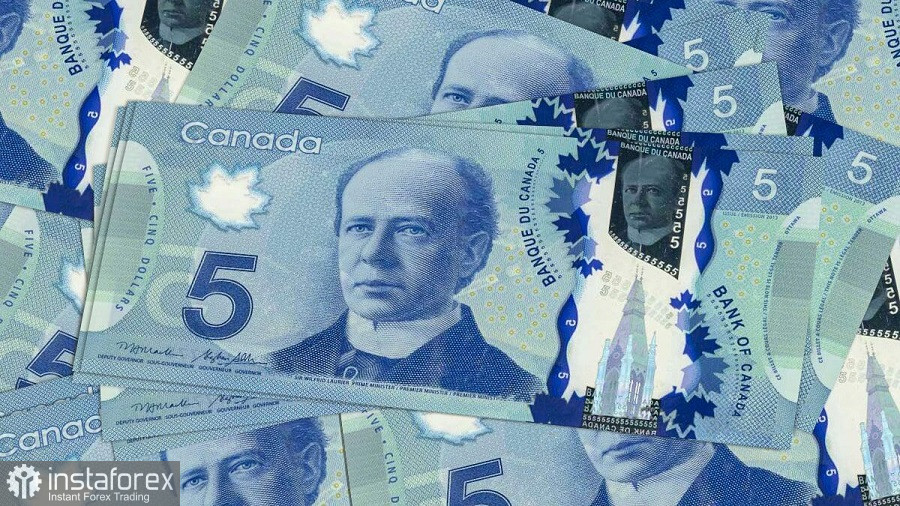Last week, the USD/CAD tried to cross the support level of 1.3330, which corresponds to the lower line of the Bollinger Bands indicator on the D1 chart. But despite the bearish sentiment, the pair updated to 1.3321, a 1.5-month low, and then it climbed and returned to the 34th figure.
Looking ahead, I should warn you that it would be best to take a wait-and-see attitude. The fact is that Canada will release its inflation report on January 17. In light of recent events, this may provoke price turbulence but we don't know whether it would be in favor of bulls or bears.

According to a number of experts (in particular, TDS), the Canadian central bank will leave interest rates unchanged at the first meeting in 2023, thus announcing a pause in the process of tightening monetary policy.
Let me remind you that at the end of the December meeting, the Bank of Canada made it clear that it will further assess the need to further increase the key rate "to restore and maintain price stability and return inflation to the 2% target." That said, Bank of Canada Governor Tiff Macklem reiterated in November and December that "inflation is a long way from what we expected" In particular, during his last speech, he noted that he expects to see "much clearer evidence next spring that inflation is moving down" in the spring of 2023.
Assessing the dynamics of the consumer price index across 2022, a downtrend is forming, after peaking (8.1%) in June. However, during the last four months, the rate of deceleration of inflation has decreased significantly, and actually came to zero. So, the index was at 7% (y/y) in August, 6.9% in September and October, and finally, 6.8% in November. In other words, overall inflation has stopped slowing since late summer, remaining at unacceptably high levels for the Bank of Canada. The core consumer price index (which excludes volatile food and energy prices remained at 5.8% in November, the same as the previous month.
According to preliminary forecasts, Canadian inflation will show a more significant slowdown in December. For example, the overall consumer price index in monthly terms should decline into the negative area, reaching -0.1%. On a yearly basis, the CPI should reach 6.3% - this is the weakest growth rate since February 2022. Core inflation should also show a downtrend, albeit at a less pronounced pace.
If the inflation report comes out at least at the forecast level (not to mention the red zone), the Canadian dollar may be under pressure. In this case, it will be possible to talk about a steady slowdown in inflation amid a fairly strong labor market. Let me remind you that according to recently published data, the unemployment rate in Canada fell to 5% in December (in November, the indicator came out at 5.1%). At the same time, most experts expected a slight increase in unemployment, up to 5.2%. Another component of the release was particularly impressive: the number of people employed in December increased by 104,000 (!) with a growth forecast of only 8,000. The average hourly wage growth rate again remained above the 5% mark (for the 7th straight month), increasing by 5.1% compared to December 2021 (without seasonal adjustments).
The inflation report, which will be published on Wednesday, will largely determine the mood of the Canadian central bank in the context of the first meeting in 2023. If inflation indicators come out in the red zone, the market will talk about a possible pause in the rate hike. If the report surprises investors with a "green color", the loonie will receive support (especially amid a weakening greenback) and will be able to return to the support level of 1.3330.
From a technical point of view, on the daily chart, the loonie is located between the middle and lower lines of the Bollinger Bands indicator, as well as under all the lines of the Ichimoku indicator, indicating bearish sentiment. The nearest target of the bearish movement is the 1.3330 mark, which corresponds to the lower line of the Bollinger Bands on the D1 chart, with the prospect of further decline to the base of the 32nd figure. But you should only make a decision once the inflation report has been released. This report can significantly "redraw" the fundamental picture for USD/CAD.
 English
English 
 Русский
Русский Bahasa Indonesia
Bahasa Indonesia Bahasa Malay
Bahasa Malay ไทย
ไทย Español
Español Deutsch
Deutsch Български
Български Français
Français Tiếng Việt
Tiếng Việt 中文
中文 বাংলা
বাংলা हिन्दी
हिन्दी Čeština
Čeština Українська
Українська Română
Română

